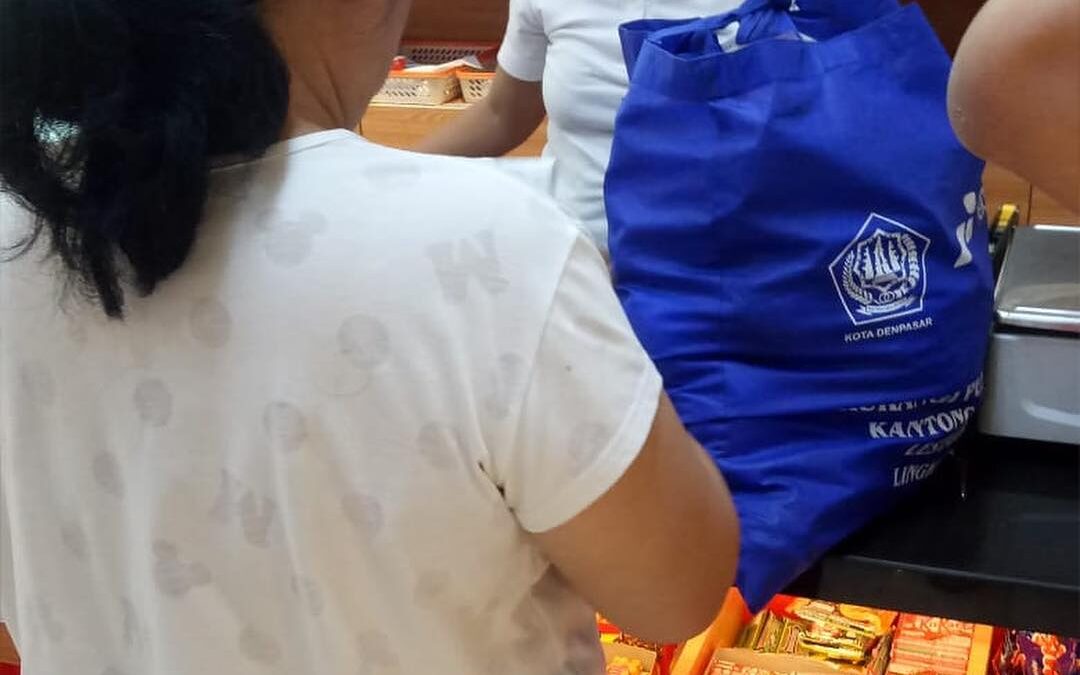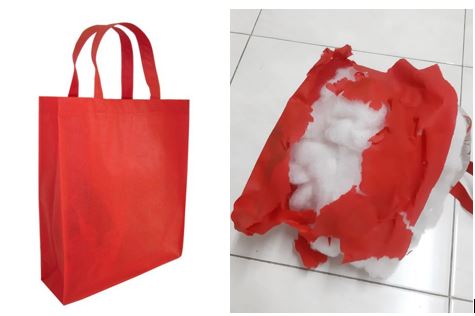With Bali’s government regulation number 97/2018 in banning plastic bags, plastic straws and Styrofoams many shopping markets change their plastic bags into something else, a spunbond bag. With only five thousand rupiah you can get one of these bags. You probably also get it for free from conferences/seminars, events or from organizations. Shockingly, not many people know that this spunbond bag is not made from cotton, but plastic.
Spunbond fabric is a nonwoven material created by layering the fibers into a web and then bonding it using a physical or chemical method. Spunbond products are usually used in carpet backing, geotextiles, and disposable medical/hygiene products1.
Unfortunately, most people think that this material is a regular cotton. It is not. It is plastic that is disguised as a fabric. It is made mostly from Polypropylene (PP) although PET and Nylon also can be used. PP is not biodegradable plastic which means the particle is not safe for environment. If it is floated into the oceans it will turn into microplastic and enter our food chain and influence our health. This PP will be degrade like OXO plastic (Plastic that will degrade because of oxygen (oxidation)) based on the experience of some people that reported by Zero Waste Nusantara. It may take different degradation rate if it is end up in landfills.
Besides the non-safe disposability, spunbound material is also not very strong. This material is designed mostly as layering material, not main material. So it will be easy to tear down the fabric compared to cotton.
So the questions is, is it a reusable bag? Yes. This spunbound bag is reusable, can be used many times although it is inferior to cotton bags. Is it sustainable? No because you can only use it few times before it will tear and hard to be mended and it is from new plastic. The recyclability of this bags also in debate because most of the used bags are dirty from use so recycling it with require more energy than making new products. So try to get the most of this spunbound bag, especially if you got it for free.
If you want to buy your own reusable bag, please choose carefully! Choose the bag that can be recycle, turn into compost, or from biodegradable or upcycled material. If you choose between cotton bag or this spunbound bag, please choose cotton bag or event better canvas. The difference is probably 10.000 to 50.000 rupiah but choosing a high quality material that could serve you a lifetime is definitely an investment not only for you, but also for our environment.
References:
- http://www.nonwoven-material.cn/spunbond-nonwoven/what-is-spunbond.asp?m=k
- Midha, Vinay Kumar and Dakuri, Arjun. 2017. Spun bonding technology and fabric properties: a review. Journal of Textile Engineering & Fashion Technology Volume 1 Issue 4 – 2017
- instagram.com/zerowastenusantara
—————————————-
Article written by Muhammad A Manaf, Biomedical Engineering graduate with expertise in Biomaterials. He currently works for ROLE Foundation as Healthy Environment Educator. You can check his other works on his website here.



Recent Comments